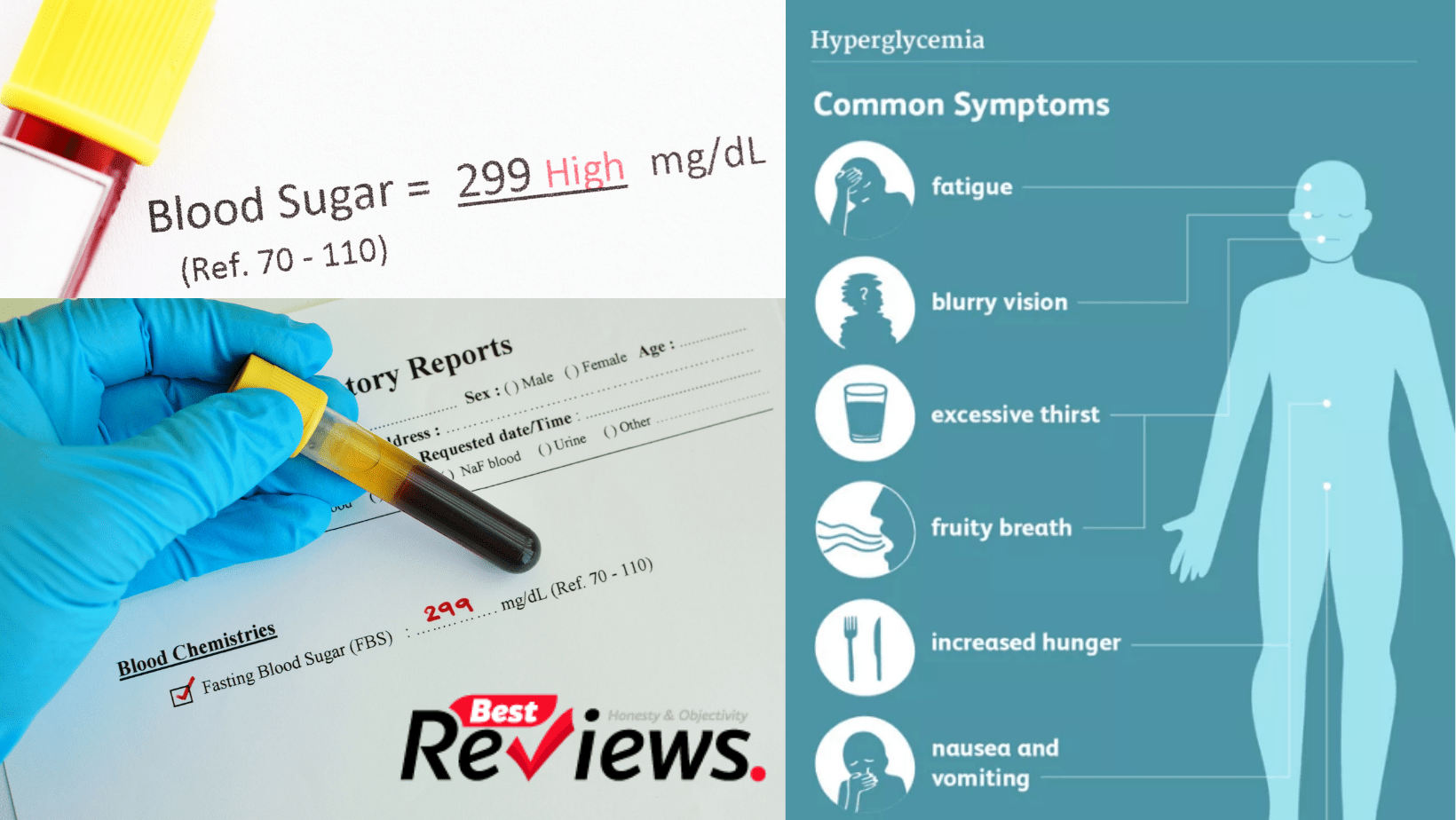Table of Contents
What are blood sugar symptoms? The majority of the early symptoms are caused by higher-than-normal glucose levels in your blood, which is a type of sugar.
The warning indicators can be so subtle that you don’t even recognize them when they are present. This is particularly true in the case of type 2 diabetes. Some people do not realize they have the condition until they begin to experience symptoms as a result of long-term damage caused by the disease.
Symptoms of type 1 diabetes usually appear fast, within a few days or a few weeks after the diagnosis is made. They’re also far more severe.
1 Early Signs of Diabetes
Some of the telltale warning signs of diabetes are the same for both forms of diabetes.
- Hunger and exhaustion. Your body transforms the food you eat into glucose, which is then used by your cells as an energy source. Your cells, on the other hand, require insulin in order to absorb glucose. If your body does not produce enough or any insulin, or if your cells are resistant to the insulin that your body produces, the glucose cannot be absorbed into your cells, and you are left with no energy. This can cause you to get hungrier and more tired than usual as a result.
- Peeing more frequently and being more thirsty. The average person needs to urinate between four and seven times in a 24-hour period, but persons with diabetes may need to pee much more frequently. Why? Normally, as glucose travels through your kidneys, your body reabsorbs it into your bloodstream. However, when diabetes causes your blood sugar to rise, your kidneys may not be able to properly filter it all out. This causes the body to produce more urine, which depletes the body’s supply of fluids. As a result, you’ll be required to visit more frequently. It’s possible that you’ll pee more. Because you’re peeing so much, you’re likely to become dehydrated. When you consume more liquids, you will also produce more urine.
- Irritating skin and a dry mouth. Because your body is utilizing fluids to produce urine, there is less moisture available for other purposes. It is possible that you will become dehydrated, and your mouth may become dry. Itchy skin can be caused by dry skin.
- The vision is hazy. Swelling of the lenses of your eyes could be caused by changes in fluid levels in your body. They shift shape and become unable to concentrate.
2 Symptoms of Type 2 Diabetes
These are more likely to appear if your glucose level has been elevated for an extended period of time.
Yeast infections are a type of infection that affects the yeast. These are available to both men and women who have diabetes. Because yeast feeds on glucose, it thrives when there is an abundance of it available. If you have an infection, it can grow in any warm, moist fold of your skin, such as:
- Between the tips of the fingers and the tips of the toes
- Specifically, under the breasts
- In or around the genital organs
Sores or cuts that take a long time to heal. Having high blood sugar over an extended period of time can impair blood flow and create nerve damage, making it difficult for your body to heal wounds.
Foot or leg pain or numbness is a common occurrence. Another complication of nerve injury is numbness.
3 Symptoms of Type 1 Diabetes
You might notice anything like this:
- Unintentional weight loss occurs. Whenever your body is unable to obtain sufficient energy from meals, it will resort to burning muscle and fat for energy instead. It is possible to lose weight even if you do not make any changes to your eating habits. See which foods are high in trans fatty acids and which foods are low in trans fatty acids.
- Nausea and vomiting are common. When your body resorts to fat burning, it produces ketones as a byproduct. If the amounts of these substances in your blood rise to dangerous levels, you may develop a potentially life-threatening disease known as diabetic ketoacidosis. Ketones have the potential to make you sick to your stomach.
4 Symptoms of Gestational Diabetes
The majority of the time, high blood sugar during pregnancy is accompanied by no symptoms. You may notice that you are thirstier than usual or that you need to go to the bathroom more frequently.
5 Warning Signs of Diabetes Complications
The following are examples of complications associated with type 2 diabetes:
- Sores or cuts that take a long time to heal
- Skin that is itchy (usually around the vaginal or groin area)
- Yeast infections that recur frequently
- Weight gain in the recent past
- Acanthosis nigricans is a skin condition characterized by velvety, black skin changes on the neck, armpits, and groin.
- Hands and feet that are numb and tingling are common.
- Reduced field of vision
- Impotence (also known as erectile dysfunction) (ED)
Learn about the steps you may take to reduce your chance of developing diabetic complications.
6 Hypoglycemia
Hypoglycemia, often known as low blood sugar, occurs when the amount of sugar or glucose in your blood becomes insufficient to sustain your body. You might be experiencing:

- Shaky
- Nervous or apprehensive
- Whether you’re sweaty, chilly, or clammy,
- irritable or impatient
- Confused
- Feeling dizzy or lightheaded? Hungry?
- Sleepy
- Weak
- Your lips, tongue, and cheeks may feel tingly or numb.
You might notice anything like this:
- a rapid heartbeat
- Skin that is pale
- A vision that is hazy
- Headache
- You have nightmares or weep when you sleep.
- Problems with coordination
- Seizures
7 Hyperglycemia
Many of the warning signs of diabetes described above are caused by hyperglycemia, often known as high blood sugar. These include:

- There is a lot of thirsts.
- The vision that is hazy
- More hunger as a result of increased peeing
- Feet that are numb or tingling
- Fatigue
- You have sugar in your urine.
- Loss of weight
- Infections of the vaginal and skin
- Cuts and sores that take a long time to heal
- Blood glucose levels greater than 180 milligrams per deciliter (mg/dl) are considered high.
8 Diabetic Coma
The medical term for this condition is a hyperosmolar hyperglycemic nonketotic syndrome (HHNS). This catastrophic consequence can result in diabetic coma and even death in people who have either type of diabetes, while it is more common in people who have type 2 diabetes. It occurs when your blood sugar levels get dangerously elevated and your body becomes excessively dehydrated. Among the signs and symptoms are:
- Blood glucose levels greater than 600 mg/dl
- My mouth feels parched and dry.
- Drunkenness to the extreme
- Skin that is warm and dry and does not sweat
- Fever that is extremely high (over 101 F)
- drowsiness or disorientation
- Loss of vision
- Hallucinations
- You have a physical weakness on one side of your body.
9 When to Call Your Doctor
It is critical to get tested for diabetes if you are above the age of 45 or have other risk factors for the disease. The early detection of the illness helps to prevent nerve damage, cardiac problems, and other issues.
As a general guideline, contact your doctor if you experience any of the following symptoms:
- Feel sick to your stomach, weak, and very thirsty
- Are peeing a lot
- Have a bad bellyache
- Are breathing more deeply and faster than normal
- Have sweet breath that smells like nail polish remover (This is a sign of very high ketones.)


















